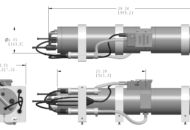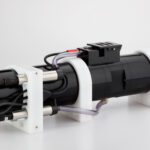The LISST-RTSSV measures in-situ particle size, settling velocity, and concentration.
See a list of papers published with LISST-RTSSV data here!
The LISST-RTSSV uses two cameras with differing magnification to image particles ranging from 3.6 microns to 4,200 microns. In-situ particle setting velocity is measured using a built-in settling column that can be sealed off from the environment. Particles and water are drawn into the chamber and allowed to settle past the cameras. Particles are counted, sized, and tracked via image processing software.
Originally developed for studying sediment plumes related to deep-sea mining operations, the LISST-RTSSV has broad applicability in other industries such as environmental monitoring, dredging, and sediment research where understanding the transport and fate of particles is critical.
The LISST-RTSSV is actively quoting as of Q4, 2024 and we do take orders. Production units will start shipping in Q4, 2025 for orders received in Q1, 2025.



